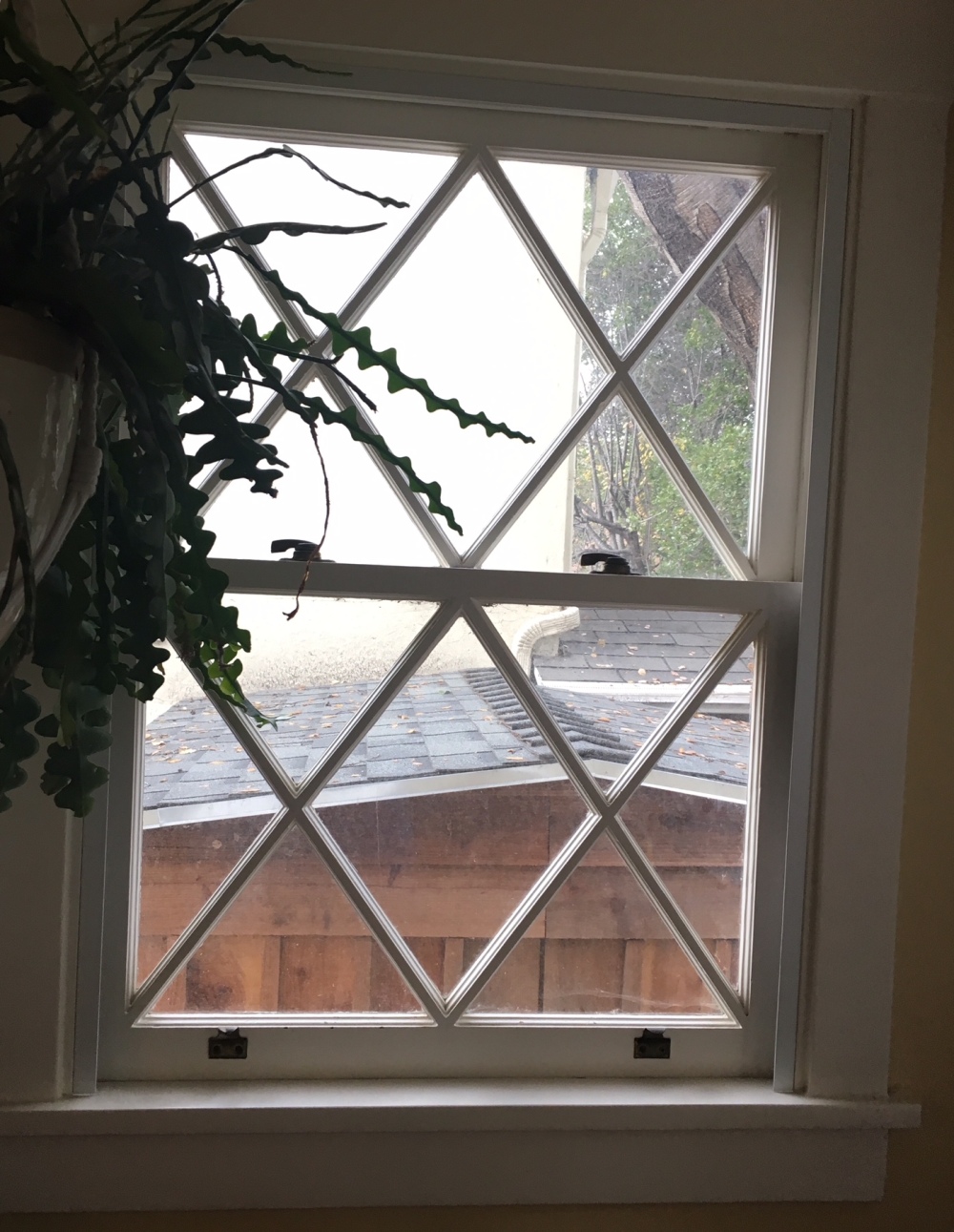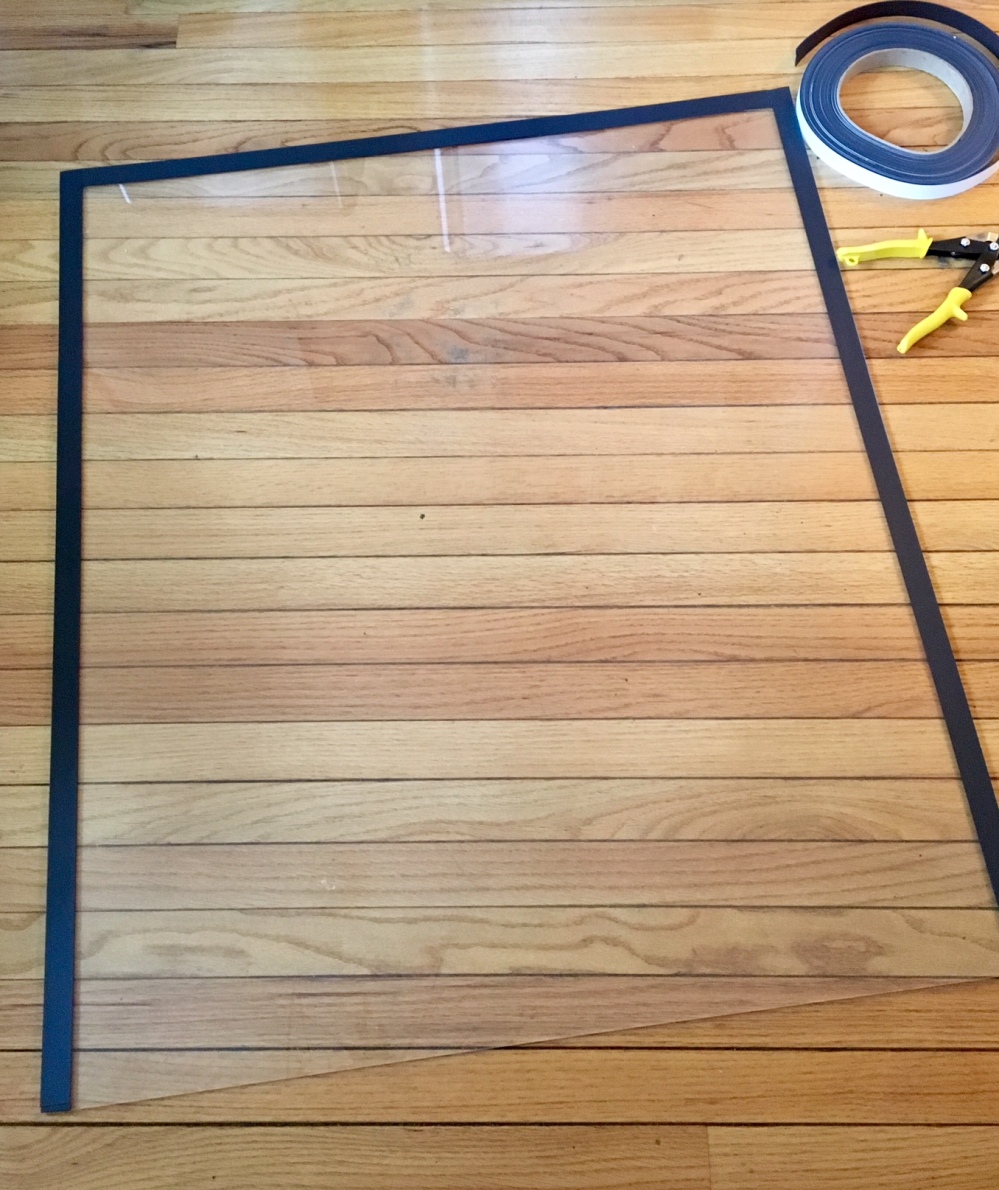Our house is 100 years old, has mostly original single-paned windows, and is very, very drafty. There are a few windows that I don’t want to put curtains or shades over, but they’re so leaky, I needed to insulate them somehow.
I’ve heard good things about Indow Windows, a company based in Portland that specializes in making custom window inserts that are especially good for old windows that you don’t want to replace or risk damaging. I called them for an estimate on five windows, ranging from 30″ x 34″ to 35″ x 40″ in size, and they came back at roughly $200-$240 per window for the standard thermal option (1/8″ thickness).
While I think Indow Windows are a great option, I didn’t really feel like spending over $1,000 on custom inserts for five windows, especially since two are hidden away in the basement. So I started Googling for DIY options and stumbled across what can only be described as a vast community of “soundproofing enthusiasts.” Soundproofing was not my primary goal, since all the windows in question face towards the backyard, it just happens that soundproofing enthusiasts are EXTREMELY passionate about window insulation solutions, and I found the most detailed knowledge from their forums and sites.
My top priorities:
- Insulate the windows with minimal damage to the window frame.
- Create an insert that would be removable so we can access the full window in warmer months.
- Keep the budget to about $100 per window.
After some research, I settled on the Magnetseal magnetic window insulation kit, which seemed like a good combination of convenience and value for my needs. Priced at $3.50 per linear foot, each window required about $45 of material, not including the plastic sheet, which I bought separately from my local plastic supplier (TAP Plastics). I chose to only frame in the sides and top of my window, due to the way my windows are designed. I also didn’t want to drill into the sill. If you choose to go this route, you’ll save a bit on framing, but you’ll need to use weatherstripping tape or other filler on the bottom of your insert to seal the window in completely.
Including the cost of the plastic and other supplies, each window came out to just under $100 to stormproof, or about 50-60 percent less than ordering custom inserts.
Here is one of the windows before (left), and a finished window (right):
Overall, I was happy with the finished product, and the process was not too bad. I have a few finishing touches I need to make (will get to those later). Of course, I made a bunch of mistakes along the way that I’ll share with you in the instructions so you can avoid them.
MATERIALS
- Magnetseal framing and magnetic tape (I recommend calling Super Soundproofing Co, or whatever seller you order from, since they will need your window dimensions before cutting your frame strips)
- Clear plastic sheet to cover the window opening (strongly recommend waiting until after you’ve installed the Magnetseal kit before ordering so you can get the exact dimensions)
- Tin snips or hacksaw to cut the steel mounting frame to size
- Drill and bits
- Measuring tape
- Pencil
OPTIONAL MATERIALS
- Caulk or other filler to seal any remaining gaps between the mounting frame and your window frame
- Weatherstripping tape to seal the bottom of your finished insert, if only framing in 3 sides, like I did
- White paint or electric tape to cover the visible magnet strip on the front of the finished insert (the sticky side of the magnet tape is white, but there are visible air bubbles against the plastic, which look kind of tacky)
INSTRUCTIONS
1. Cut down your mounting strips to size for your window.
If you’re doing multiple windows, don’t do what I did and choose the most prominent window to start with. Perhaps you’re familiar with “Newton’s First Pancake Theorem” which dictates that, much like pancakes, the first of anything you make is going to be lumpen and weird, so it’s far better to start with the window that you care the least about, and save the best window for last. You get better and faster with each window. The first window took me over an hour; by the last window, I was down to 30 minutes.
Before you cut your strips, make sure you’ve considered all your placement options, especially if you have ornate or unusual window frames. With my windows, I could have opted to install the mount inside the inner-most window frame (image on left), or flush against and covering the inner-most window frame, which would cover a small inset detail on the inner frame (see image on right). Before I got the kit, I assumed I would do the external mount, since that would give me more coverage over the window and thus better insulation. However, when I tested it in person, I was surprised by how much I missed that little decorative inset in the window frame. I also liked how the screws were not visible with the inner mount. If you’re at all unsure about it, definitely test out your options at home before going to order the plastic sheets.

2. Install the mounting frame
It goes without saying, but make sure to drill pilot holes first (it’s what separates us from the animals). An 1/8″ bit is sufficient. Mounting screws are included with the kit.
You may need to punch in additional holes in the mounting strips because they are spaced rather far apart, IMHO. I used my tin snips to cut out slots about 4″ from the end of the strip whenever needed.
It also helps to cut the last piece after the first two are up to ensure you get an exact fit. I installed the two sides first, and then measured, cut and installed the top mount.

3. Seal the gaps (optional)
After your mounting frames are up, you might want to seal up any gaps with caulk or other filler. Just make sure to wipe off any filler that gets on the mounting frame, as it can interfere with the magnetic strip’s ability to adhere to it.

4. Measure the opening and order your plastic
Remember to account for plastic’s expansion, so you’ll probably want to have the plastic cut about 1/8″-1/4″ shorter for an inside mount, depending on the size of your window (consult with your plastics supplier to determine the exact amount).
I went to my local TAP Plastics and gave them the exact dimensions for each window. They recommended that I go with a 3/16″ thickness to prevent any flexing. Each sheet was about $50.
5. Apply magnetic tape to the edges of the plastic sheet
This step is pretty simple. If you only do 3 sides, leaving the bottom edge open like I did, then you’ll probably want to add weatherstripping tape to the bottom edge. Do this AFTER you put up your window though, in case the weatherstripping adds too much bulk and messes with the magnetic alignment at the top of the window.

6. Hang your window!
If you look closely, you can see gaps at the corners where the magnetic tape strips don’t meet flush. I plan to cover the magnetic tape that is visible under the plastic sheet with paint or white electric tape. It doesn’t add to the function of the window insert, but I think it will look nicer and more polished if you can’t see the magnetic strip and the air bubbles under the plastic. I also need to find a very thin weatherstripping tape to seal the bottom edge, since the one I bought added too much height to the finished insert.
Despite a few mistakes along the way, and some finishing touches left for me to do, I’d say this was a very worthwhile weekend project.
EDITED TO ADD: It’s been less than a week since I put up these windows, and they have made a HUGE difference in the comfort level of the house. The whole room feels so much cozier, and there are no longer random drafts blowing through the kitchen. I rate this project 10 out of 10. Would do again.


